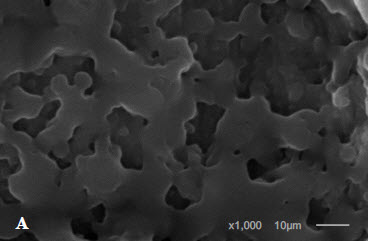Development of Spray-Dried Lime Juice Powder with Improved Bioactive Compound Retention
Keywords:
Lime powder, Spray drying, Physicochemical properties, Bioactive retention, Antioxidant activityAbstract
Lime juice powder was developed with 20% of combined maltodextrin/gum Arabic at a ratio of 4:1. A high shear homogenization was applied to encapsulate phytochemical compounds before spray drying with the purpose of protecting bioactive compounds from thermal degradation. The effect of high shear homogenization on physicochemical properties and antioxidant activity of spray-dried lime powder was studied. The particle size, morphology, moisture content, color, solubility, hygroscopicity, ascorbic acid, total polyphenol and flavonoid contents, and antioxidant activity of the spray-dried powder undergoing the homogenization were compared with those of the non-homogenized powder. The higher yield (30%) was obtained in the homogenized powder compared with the control (28%) with no significant difference. The average particle diameter of the homogenized powder was 0.1-4 micrometers, smaller than 18-26 micrometers of the untreated powder. Morphological study revealed that the powder without homogenization was densely packed compared with the homogenized powder. Moisture content of homogenized powder and that of the particles without homogenization were 3.91% and 5.42%, respectively. Higher solubility and less hygroscopicity values and color after spray drying were observed in reconstituted lime powder with high shear homogenization. Folin-Ciocalteu and aluminum trichloride (AlCl3) assays were used to determine total phenolic and flavonoid compounds, respectively. 2, 2-diphenyl-1-picryl hydrazyle-hydrate (DPPH) assay was used to determine total antioxidant activity of the powders. The retention of ascorbic acid and total phenolic contents, and antioxidant activity was significantly better in the homogenized powder, but not the flavonoid contents. The antioxidant activity derived from total phytochemical compounds in the treated powder was preserved by the homogenization before spray drying. This study indicated that the application of high shear homogenization with combined drying agent before spray drying could prevent phytochemical compounds in lime from thermal degradation.
References
Association of Official Analytical Chemists. (1999). Official methods of analysis. Arlington, VA: Author.
Association of Official Analytical Chemists. (2006). Official methods of analysis. Washington, DC: Author.
Attaway, J. A. (1993). Citrus juice flavonoids with anticarcinogenic and antitumor properties. Food Phytochemicals for Cancer Prevention I, 546,
-248.
Bhattarai, S., Tran, V. H., & Duke, C. C. (2001). The stability of gingerol and shogaol in aqueous solutions. Journal of Pharmaceutical
Sciences, 90(10), 1658-1664.
Cai, Y. Z., & Corke, H. (2000). Production and properties of spray-dried Amaranthus betacyanin pigments. Journal of Food Science,
(7), 1248-1252.
Chang, C.-C., Yang, M.-H., Wen, H.-M., & Chern, J.-C. (2002). Estimation of total flavonoid content in propolis by two complementary colorimetric methods. Journal of Food and Drug Analysis, 10(3), 178-182.
Chau, C.-F., Wang, Y.-T., & Wen, Y.-L. (2007). Different micronization methods significantly improve the functionality of carrot insoluble
fibre. Food Chemistry, 100(4), 1402-1408. doi:10.1016/j.foodchem.2005.11.034 Chranioti, C.,
Chanioti, S., & Tzia, C. (2016). Comparison of spray, freeze and oven drying as a means of reducing bitter aftertaste of steviol glycosides (derived from Stevia rebaudiana Bertoni plant)-Evaluation of the final products. Food Chemistry, 190, 1151-1158.doi:10.1016/j.foodchem.
06.083
Chuacharoen, T., & Sabliov, C. M. (2016). The potential of zein nanoparticles to protect entrapped β-carotene in the presence of milk under simulated gastrointestinal (GI) conditions. LWT-Food Science and Technology, 72, 302-309. doi:10.1016/j.lwt.2016.05.006
Fazaeli, M., Emam-Djomeh, Z., Kalbasi Ashtari, A., & Omid, M. (2012). Effect of spray drying conditions and feed composition on the physical properties of black mulberry juice powder. Food and Bioproducts Processing, 90(4), 667-675. doi:10.1016/j.fbp.2012.04.006
Finney, J., Buffo, R., & Reineccius, G. A. (2002). Effects of type of atomization and processing temperatures on the physical properties and stability of spray-dried flavors. Journal of Food Science, 67(3), 1108-1114. doi:10.1111/j.1365-2621.2002.tb09461.x
Footrakul, P., Mawimol, W., & Boonyasupa, W. (2003). Development of lime powder processing and quality evaluations during storage. In Proceedings of the 41st Kasetsart University Annual Conference (pp. 218-229). Bangkok: Kasetsart University.
Frascareli, E. C., Silva, V. M., Tonon, R. V., & Hubinger, M. D. (2012). Effect of process conditions on the microencapsulation of coffee oil by spray drying. Food and Bioproducts Processing, 90(3), 413-424. doi:10.1016/j.fbp.2011.12.002
Ghafar, M. F., Prasad, K. N., Weng, K. K., & Ismail, A. (2010). Flavonoid, hesperidine, total phenolic contents and antioxidant activities from Citrus species. African Journal of Biotechnology, 9(3), 326-330.
Goula, A. M., & Adamopoulos, K. G. (2005). Stability of lycopene during spray drying of tomato pulp. LWT - Food Science and Technology, 38(5), 479-487. doi:10.1016/j.lwt.2004.07.020
Janiszewska, E., Jedlińska, A., & Witrowa-Rajchert, D. (2015). Effect of homogenization parameters on selected physical properties of lemon aroma powder. Food and Bioproducts Processing, 94, 405-413. doi:10.1016/j.fbp.2014.05.006
Largo Avila, E., Cortes Rodríguez, M., & Ciro Velásquez, H. J. (2015). Influence of maltodextrin and spray drying process conditions on sugarcane juice powder quality. Revista Facultad Nacional de Agronomía Medellín, 68(1), 7509-7520.
McClements, D. J., Decker, E. A., & Weiss, J. (2007). Emulsion-based delivery systems for lipophilic bioactive components. Journal of Food Science, 72(8), R109-R124. doi:10.1111/j.1750-3841.2007.00507.x
Paterson, A. H. J., & Bröckel, U. (2015). Caking development in lemon juice powder. Procedia Engineering, 102, 142-149. doi:10.1016/j.proeng.
01.117
Santhalakshmy, S., Don Bosco, S. J., Francis, S., & Sabeena, M. (2015). Effect of inlet temperature on physicochemical properties of spray-dried
jamun fruit juice powder. Powder Technology, 274, 37-43. doi:10.1016/j.powtec.2015.01.016
Shihawong, W. (2003). Effects of maltodextrin on qualities of lime powder produced by freeze drying. In Proceedings of the 41st Kasetsart
University Annual Conference (pp. 286-293). Bangkok: Kasetsart University.
Singleton, V. L., Orthofer, R., & Lamuela-Raventós, R. M. (1999). Analysis of total phenols and other oxidation substrates and antioxidants by means of folin-ciocalteu reagent. Methods in Enzymology, 299, 152-178.
Theansuwan, W., Triratanasirichai, K., & Tangchaichit, K. (2008). Continuous production of lime juice by vacuum freeze drying. American Journal of Applied Sciences, 5(8), 959-962.
Tonon, R. V., Brabet, C., & Hubinger, M. D. (2010). Anthocyanin stability and antioxidant activity of spray-dried açai (Euterpe oleracea Mart.) juice produced with different carrier agents. Food Research International, 43(3), 907-914. doi:10.1016/j.foodres.2009.12.013













